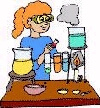down 1.
The number of protons in the nucleus of an atom. Elements are arranged according to this in a periodic table. (2 words)
|
down 3.
The pull of gravity on an object.
|
down 4.
Used to measure something that is not straight. (2 words)
|
down 6.
The change of water from a gas into a liquid.
|
down 7.
One of the two particles that make up a nucleus. This has no electric charge.
|
down 8.
A type of power that is generated from falling water.
|
down 11.
Water exists on earth in all ____ states of matter.
|
down 14.
As a result of the law of conservation, during a chemical change the mass of the products is equal to the mass of the ____.
|
down 16.
An element cannot be broken down into a ____ substance.
|
down 19.
A state of matter that has no fixed shape and no fixed volume.
|
across 2.
Used to measure temperature.
|
across 3.
The most common substance on Earth.
|
across 5.
The pull on the surface of liquids that allow liquids to form drops when they fall. (2 words)
|
across 9.
Used to measure the volume of a liquid. (2 words)
|
across 10.
Particles in a gas are ____ apart than the particles in a liquid.
|
across 12.
The mass of a proton is approximately ____ to the mass of a neutron.
|
across 13.
After a physical or chemical change, the total amount of matter is the ____ as it was before.
|
across 15.
These move around an atom's nucleus and have a negative electric charge.
|
across 17.
A solid always take up the same amount of this.
|
across 18.
The temperature at which a given substance will change from a liquid into a gas. (2 words)
|
across 20.
The upward force on matter that is in a liquid or gas. This allows objects to float in water.
|
across 21.
The gas state of water. (2 words)
|








































































































































































































































































































































































































































































































































































































































